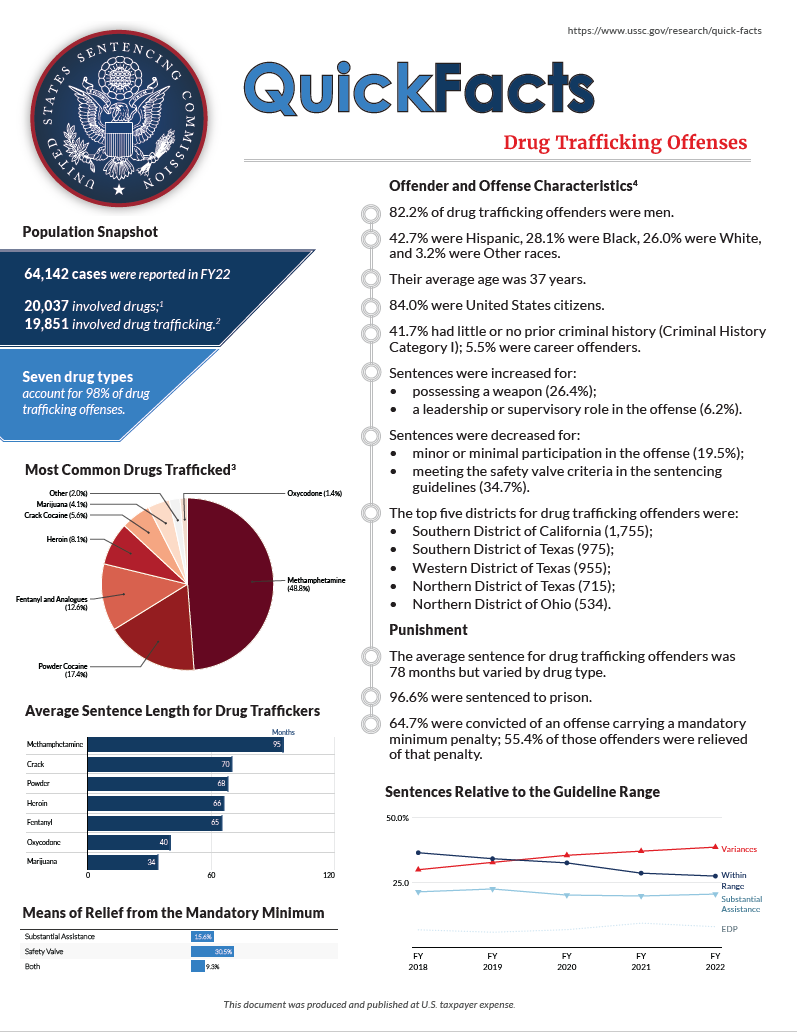Of the 61,678 cases reported to the Commission in fiscal year 2024, 18,150 involved drugs.1 Of those, 18,029 cases involved drug trafficking.2 Seven drug types account for 98.3% of drug trafficking offenses. Quick Facts provide an overview of these offenses, though this information may vary depending on the type of drug involved in the offense.3, 4
Click the cover for the PDF handout or learn more below.
Individual and Offense Characteristics
- 84.4% of individuals sentenced for drug trafficking were men.
- 44.4% were Hispanic, 28.5% were Black, 23.8% were White, and 3.3% were Other races.
- Their average age was 38 years.
- 80.4% were United States citizens.
- 45.2% had little or no prior criminal history (Criminal History Category I); 5.9% were career offenders.
- Sentences were increased for:
- possessing a weapon (30.2%);
- a leadership or supervisory role in the offense (6.9%).
- Sentences were decreased for:
- minor or minimal participation in the offense (17.9%);
- meeting the safety valve criteria in the sentencing guidelines (35.0%).
- The top five districts for drug trafficking offenses were:
- Southern District of California (1,070);
- Southern District of Texas (839);
- Western District of Texas (723);
- District of Puerto Rico (626);
- Northern District of Texas (556).
Punishment
- The average sentence for individuals trafficking drugs was 82 months but varied by drug type.
- 96.5% were sentenced to prison.
- 54.6% were convicted of an offense carrying a mandatory minimum penalty; 49.6% of those individuals were relieved of that penalty.
1 Drug offenses include cases where individuals were sentenced under USSG Chapter Two, Part D (Drugs).
2 Individuals sentenced for drug trafficking were sentenced under USSG §§2D1.1 (Drug Trafficking), 2D1.2 (Protected Locations), 2D1.5 (Continuing Criminal Enterprise), 2D1.6 (Use of a Communication Facility), 2D1.8 (Rent/Manage Drug Establishment), 2D1.10 (Endangering Human Life), or 2D1.14 (Narco-Terrorism).
3 Cases with incomplete sentencing information were excluded from the analysis.
4 The 'Fentanyl' category includes both Fentanyl (N-phenyl-N-[1-(2-phenylethyl)-4-piperidinyl] Propanamide) and Fentanyl Analogue.
SOURCE: United States Sentencing Commission, FY 2020 through FY 2024 Datafiles, USSCFY20-USSCFY24.

